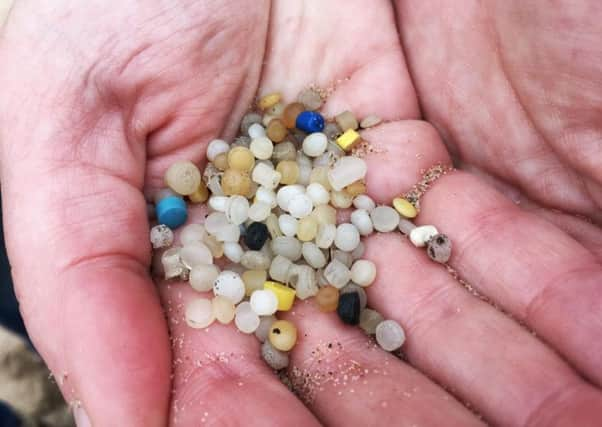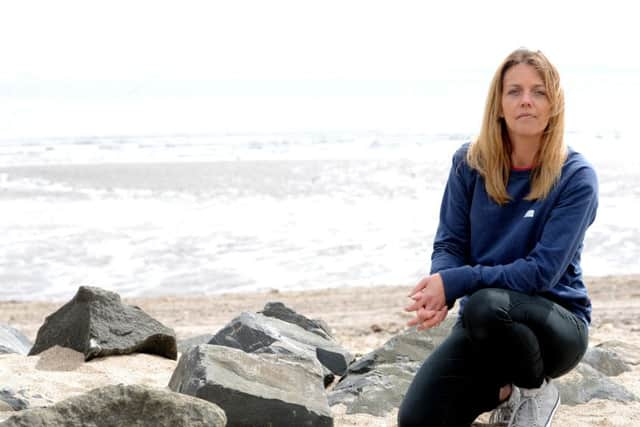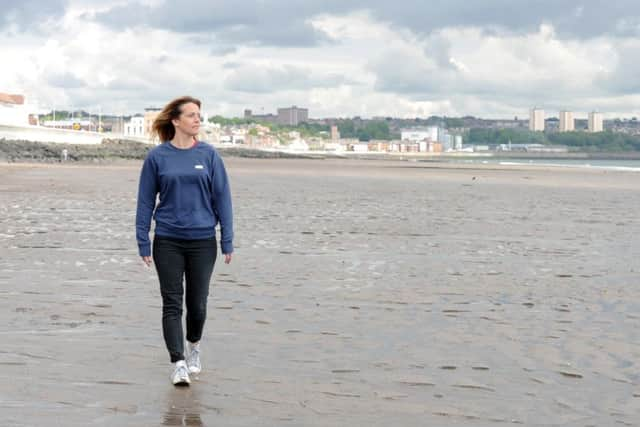Plastic pollution in Forth worse than expected- new research reveals


A study of beaches at 16 coastal locations along both sides of the Forth estuary retrieved over 20,000 pieces of plastic from just 48 square metres (517 sq ft) of sample areas.
The study, carried out for the university by Suzanne Grimes, a research scientist from Glenrothes, involved scraping the top two centimetres of sand at selected beaches including Kirkcaldy, Leven, Kinghorn, and Aberdour and sifting through to find plastic deposits.
You may also be interested in:


Advertisement
Hide AdAdvertisement
Hide AdAlarmingly, the research found that 71.5 per cent of the plastics recovered were nurdles – small plastic pellets about the size of a lentil which are melted down during the plastic production process by manufacturers.


Suzanne says the findings point to mishandling in the industrial process which is causing large numbers of nurdles to find their way to beaches along the Forth.
Advertisement
Hide AdAdvertisement
Hide Ad“I was shocked by what I found when I started this project,” she said.
“I didn’t expect to find so many heavily polluted areas. It was overwhelming.”
Suzanne admitted her findings were much higher than anyone had expected.
“What I found was worse than any previous attempts to gauge the scale of the plastic pollution problem had shown.“ she said.
Advertisement
Hide AdAdvertisement
Hide Ad“Inspections take place but these are announced ahead of time so areas can be cleaned up.
“When you conduct a survey at random a different picture emerges.”
Suzanne added that it was the unexpected high levels of microplastics that had been the most shocking aspect of her findings.
“The fact I found so much plastic gives you some idea of how bad the situation is across the Forth estuary.”
Advertisement
Hide AdAdvertisement
Hide Ad“I expected to find a lot of secondary plastics such as plastic bags, bottles, cotton buds and things like that because there’s been so much publicity about them, but the nurdles shocked me.
“It’s impossible to say how bad the situation is, but you must be talking about millions of pieces in the Firth of Forth.
“I live in Fife and used to take my children to beaches here but I wouldn’t do that now having found what I have.”
Worryingly, the most polluted site of those excavated was at Bo’ness where over 14,500 pieces of plastic were found in just a three square metre area.
Advertisement
Hide AdAdvertisement
Hide AdOf the beach locations in Fife selected as part of the study, the Aberdour sample proved one of the highest for primary plastic polution with over 800 pieces found wthin the sample area as well as 100 pieces of secondary plastic.
“Something needs to be done about this,” said Suzanne.
“We are meant to have a polluter-pays principle when it comes to dealing with pollution, but the manufacturer is only liable until the goods leave the factory. Then it is down to the transport company. And when it gets into drains someone else again.
“Millions of pieces of primary plastic are finding their way onto our beaches and into our water and no one is taking responsibility.”
Responsibility for ensuring manufactures don’t pollute and for investigating instances of plastic pellet pollution lies with the Scottish Environment Protection Agency (SEPA).
Advertisement
Hide AdAdvertisement
Hide AdCommenting on the findings of Suzanne’s study, a SEPA spokesman said: “SEPA regulates sites that produce plastic pellets and is working with pellet producers to ensure that the risk of pellet loss into the environment is minimised.
“SEPA takes this issue very seriously, and relevant operators are required to monitor for pellet loss and take action where this is identified.
“Pellets have been manufactured and used in Scotland over a considerable length of time and it is likely that some of the pellets in the environment, particularly coloured ones, are historic and due to their nature will not degrade.”
SEPA is also one of the organisations that makes up the Scottish Government’s Zero Waste Scotland’s Pellet Loss Steering Group which launched Operation Clean Sweep back in 1991. The initiative includes practical solutions to prevent loss for those who make, ship and use nurdles. The key message is that good handling practice can easily reduce pellet loss.
Advertisement
Hide AdAdvertisement
Hide AdHowever, SEPA admitted there were limits to the level of enforcement they could administer.
“We do not know where these fresh nurdles are coming from,” a spokesman from the agency said.
“However unlike manufacturers, companies that use or transport nurdles around the Forth are not subject to controls from SEPA. In addition, SEPA have no jurisdiction over shipping cargo or docks.”
Because of the of interest, and concern over Suzanne’s findings, the Dundee undergraduate is now planning a series of follow up research to determine the impact the plastic within the Forth is having on the food chain and on the environment.
Advertisement
Hide AdAdvertisement
Hide Ad“My study has certainly provoked debate and opened up other avenues of research which we are already planning to pursue,” said Suzanne.
“Now we know that this plastic is here we need to know what it’s impact is on the long-term and it’s something we need to do without delay.”